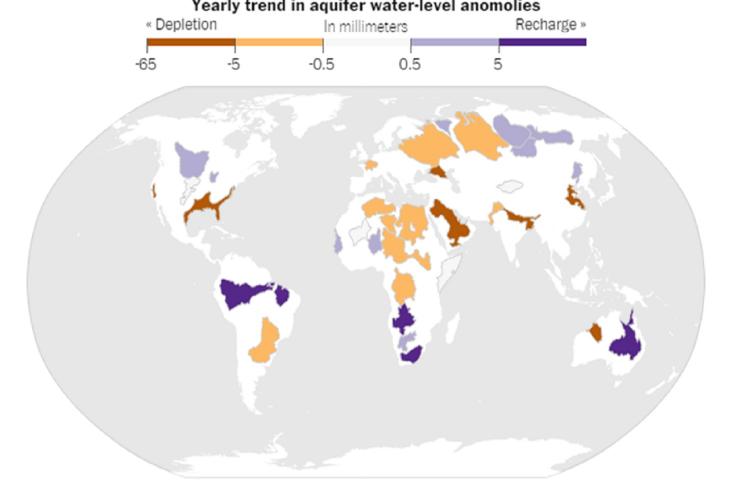MILAN – The biggest underground aquifers in the world are being depleted at an alarming rate. This has been reported in new data from NASA, published in the Washington Post, which reveals how in ten years, 21 of the 37 largest aquifers in the world have fallen below the critical level. The places most at risk range from India, to China, the US and France, and researchers have stated that this is a long term problem which is destined to get worse. “The situation is highly critical”, commented Jay Famiglietti, senior water scientist at NASA’s Jet Propulsion Laboratory in California.
The importance of groundwater aquifers
Underground aquifers supply 35% of water used by humans across the world. The demand is even greater in periods of drought and the groundwater sources which suffer most stress are, moreover, located in densely populated regions, where alternative means of addressing water shortage are limited. The condition of the world’s underground aquifers varies widely and depends largely on how they have been used. In Australia, for example, the Canning basin in the western region of the country has the third highest rate of depletion in the world, which can probably be attributed to extraction activities for gold and iron and exploration in oil and gas research across the zone surrounding the basin.
Causes and remedies
Famiglietti claims the problems with underground water are aggravated by global warming, which in the regions closest to the Equator have led to extreme drought phenomena and heavy rain. In the mid-latitudes, however, pumping is governed by criteria which are not very sustainable. The experts hope that making this data public (it has appeared in the journal, Water Resource Research) will stimulate discussion and the generation of new research on the condition of underground water. “We need to reflect on how to manage resources – asserts Famiglietti – because now we are approaching critical levels”.











